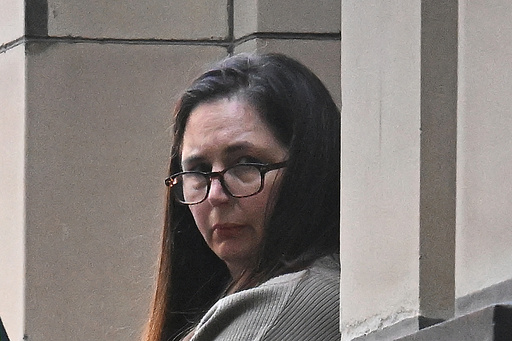In Australia, the jury in a high-profile triple murder trial involving Erin Patterson has commenced its deliberations. Patterson is accused of intentionally murdering three of her estranged husband’s relatives by serving them a meal laced with toxic mushrooms at her home in Leongatha. The tragic event occurred during a lunch where the guests consumed individual beef Wellington pastries containing death cap mushrooms. Three guests, including her parents-in-law, Don and Gail Patterson, and Gail’s sister, Heather Wilkinson, succumbed to the poisoning, while Heather’s husband, Ian Wilkinson, survived despite serious illness.
Throughout the nine-week trial in Victoria’s Supreme Court, Erin Patterson, a 50-year-old mother of two, took to the stand to assert her innocence. She faces the possibility of life imprisonment if found guilty. The central question for the jury is whether Patterson intended to fatally poison her guests.
The prosecution argued that Patterson’s actions were premeditated, emphasizing that she researched and foraged the toxic mushrooms purposefully. They accused her of lying to investigators and attempting to destroy evidence by discarding a food dehydrator and resetting her phone. Moreover, they alleged that Patterson concocted a false narrative of having a medical diagnosis to ensure the attendance of her guests, selectively poisoned only her visitors, and feigned illness afterward.
In contrast, the defense maintains that the poisoning was an accidental outcome owing to a mix-up of store-bought and wild mushrooms which she was unaware were lethal death caps. Patterson’s defense team explained her milder symptoms as a consequence of her self-induced vomiting due to an eating disorder. They contended that her deception regarding mushroom foraging was a reaction of panic under police interrogation and refuted any claims of her alleging a cancer diagnosis to her lunch guests.
Justice Christopher Beale took four days to summarize the complexities of the case for the jurors before they began their deliberations. He advised the jury against letting emotions influence their decision-making process. The Justice pointed out that although Patterson admitted to several untruths, these should not automatically imply her guilt beyond reasonable doubt.
Prosecutors did not present a specific motive for the alleged crimes, although they alluded to strained relations between Patterson and her estranged husband, Simon Patterson, as well as her frustrations with her in-laws, based on social media comments. However, the defense highlighted the loving relationship Patterson reportedly maintained with her in-laws, who were also her children’s primary grandparents, arguing against her having any motive for the crime.
Interestingly, Simon Patterson received an invitation to the ill-fated lunch but did not attend.
A selected 12-member jury from an original group of 14 took on the task of determining Patterson’s fate. They are in sequestration, meaning their deliberations are conducted in isolation without external influence until they reach a unanimous decision. As of late Monday, the jury had not reached a verdict and will reconvene on Tuesday to deliberate further.
Sequestration highlights the intense public interest in this case, which has captivated Australia for two years. The trial proceedings unfolded in Morwell, Victoria, drawing considerable public attention and exhaustive media coverage, including live blogs documenting each trial day for over two months.


